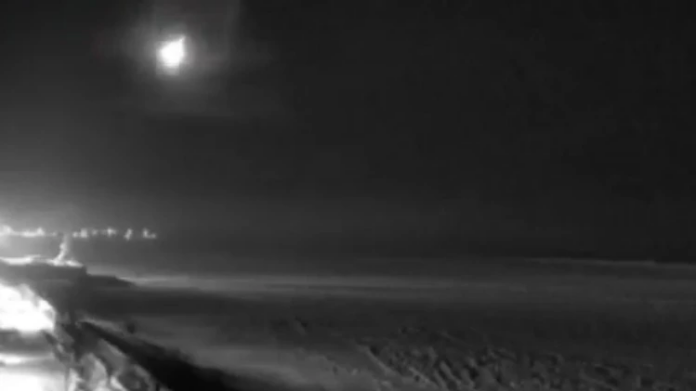In a celestial event that captivated onlookers in Yakutia, Russia, a small asteroid measuring approximately 70 centimeters in diameter collided with Earth on Tuesday, December 3, 2024. The asteroid, spotted just 12 hours before impact, lit up the Siberian sky as it disintegrated into a spectacular fireball upon entering the Earth’s atmosphere.
Witnesses reported the phenomenon as a breathtaking display, with the asteroid breaking into multiple fragments as it descended. Despite the dramatic visuals, the European Space Agency (ESA) confirmed that the collision posed no threat, leaving behind no injuries or significant damage.

ESA Tracks And Confirms Harmless Collision
The European Space Agency (ESA) shared real-time updates about the asteroid on their official X (formerly Twitter) account, stating:
“Incoming! A small asteroid has just been spotted on a collision course with Earth. At around ~70 cm in diameter, the impact will be harmless, likely producing a nice fireball in the sky over northern Siberia around seven hours from now at ~16:15 +/-.”
This asteroid’s behavior was comparable to earlier entries like 2022 WJ, 2023 CX1, and 2024 BX1, which have also created dazzling fireballs upon atmospheric entry. The ESA’s ability to track such objects in advance underscores the importance of planetary defense programs, even when the impact is deemed harmless.
Witness Accounts: A Spectacle Of Nature
Residents in northern Siberia were treated to a rare celestial display as the asteroid entered the Earth’s atmosphere, igniting into a fiery streak across the sky. Moments after impact, the asteroid disintegrated into smaller fragments, scattering harmlessly over the region.
One witness described the scene as “a surreal moment that looked like something out of a science fiction movie.” Another added, “We saw a bright light streaking across the sky, and then it vanished. It was beautiful and terrifying at the same time.”
The event serves as a reminder of the dynamic nature of our solar system and the continuous monitoring required to track and study near-Earth objects.

NASA’s DART Mission And Planetary Defense Efforts
This latest asteroid event coincides with ongoing efforts by space agencies to enhance planetary defense systems. In October, NASA launched its Double Asteroid Redirection Test (DART) mission, aiming to develop techniques for deflecting potentially hazardous asteroids.
The DART spacecraft, which collided with the asteroid Dimorphos in 2022, successfully altered the smaller asteroid’s orbit around its larger companion. This experiment demonstrated the feasibility of deflecting dangerous space rocks if detected early enough.
Building on this achievement, the European Space Agency launched the Hera spacecraft in October 2024. Hera is currently en route to Dimorphos to examine the impact’s aftermath and gather critical data for future asteroid deflection missions.
The Role Of Hera In Future Missions
Hera’s two-year mission will provide scientists with close-up observations of the changes caused by NASA’s DART impact. Researchers aim to determine how effective the test was in altering the asteroid’s trajectory and whether additional strategies are needed for planetary defense.
Before Hera’s launch, University of Maryland astronomer Derek Richardson explained the mission’s significance:
“The more detail we can glean, the better, as it may be important for planning a future deflection mission should one be needed.”
Hera will investigate whether DART left a crater on Dimorphos or caused significant reshaping of the asteroid’s surface. This information is vital for refining techniques to protect Earth from potential asteroid threats in the future.
Why Planetary Defense Matters?
While the asteroid over Siberia caused no harm, it highlights the importance of monitoring and preparing for potential asteroid collisions. Larger asteroids, unlike the 70 cm object, could pose catastrophic risks if they collide with Earth. The successful tracking of this small asteroid demonstrates the growing capabilities of global space agencies to predict and mitigate such events.
The DART and Hera missions represent crucial steps in ensuring Earth’s safety from near-Earth objects. By combining early detection, precise tracking, and potential deflection technologies, space agencies worldwide are laying the groundwork for effective planetary defense systems.
A Spectacle Of Science And Nature
For the residents of Siberia, the asteroid’s fiery descent was a rare and awe-inspiring event. For scientists, it served as a practical example of the value of continuous monitoring and global collaboration in space exploration.
The Proba-3 mission set to launch on December 5 by ISRO in collaboration with ESA, alongside efforts like DART and Hera, reflects the growing international focus on safeguarding Earth from celestial threats. As humanity ventures deeper into space, understanding and mitigating such phenomena remain paramount.

